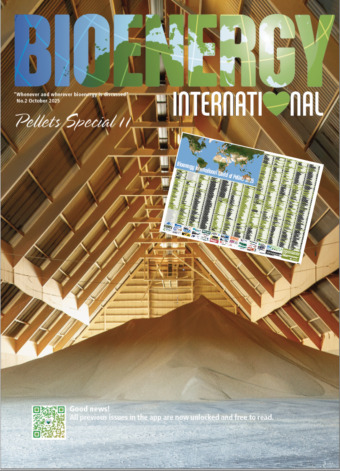In the United States (US), Southern California Gas Co. (SoCalGas), the country's largest gas distribution utility, has announced that 14 billion cubic feet of renewable natural gas (RNG) produced from organic waste was distributed via SoCalGas' pipeline system in 2021. This is 2 billion cubic feet more than 12 billion cubic feet distributed by SoCalGas in 2020.

In addition, the utility completed five RNG interconnection projects during 2021 located throughout its service territory including the San Joaquin Valley and San Bernardino County. In total there are now nine RNG projects connected to SoCalGas’ system.
These RNG projects are an important step toward helping San Joaquin Valley residents and our Dairy industry partners move in the right direction. RNG uses existing dairy manure and natural gas infrastructure to deliver a cleaner, carbon-negative fuel to trucks that would replace diesel trucks, reducing air pollution along the San Joaquin Valley’s freeway corridors while providing jobs and revenue sources for our residents, said California Assembly Member Devon J. Mathis.
As part of SoCalGas’ goal of achieving net-zero greenhouse gas (GHG) emissions in its operations and delivery of energy by 2045, the utility plans to deliver 20 percent RNG to core customers by end of 2030 and continues to make significant progress towards reaching its goal.
Thanks in part to the low carbon fuel standards program, last year more than 14 billion cubic feet of RNG was transported by the SoCalGas’ pipeline system, displacing more than 778 000 metric tonnes in carbon dioxide equivalent. The establishment of an RNG procurement standard for gas utilities, like the one up for a vote by the CPUC could help build on the success of California’s low carbon fuel standard and help bring more renewable natural gas onto our system to accelerate California’s decarbonization goals, said Jawaad Malik, chief environmental officer for SoCalGas.
Rialto Bioenergy Facility completed
One of the projects produces RNG from diverted landfill waste, completed last May by Anaergia, Inc. (Anaergia) at its Rialto Bioenergy Facility.
The completion of this RNG project in Rialto is an important step toward reaching the state’s climate and environmental goals. As RNG is a cleaner, carbon-negative fuel, this project has the potential to help reduce air pollution in the Inland Empire while creating economic opportunities for our residents, said Mayor of Rialto, Deborah Robertson.
The facility has the capacity to convert up to 300 000 tonnes per year of landfill-diverted organic waste and biosolids from municipal wastewater treatment plants (WWTPs) into fertilizer and up to 985,000 MMBTU per year of RNG using Anaergia’s advanced anaerobic digestion (AD) technology and proprietary systems. The RNG is injected into SoCalGas’ pipeline.
As a global leader in anaerobic digestion and upcycling of organic waste, Anaergia has deployed more infrastructure capacity for converting food and wastewater biosolids than any other company in California. Our Rialto Bioenergy Facility, the largest landfill-diverted organics-to-RNG facility in North America, will be central in helping California cut methane emissions from landfills under SB 1383, and stands as a model of efficiently converting organic waste into carbon-negative renewable fuel, said Yaniv Scherson, COO for Anaergia.
The production and use of RNG are growing in California and nationally. There are currently more than 245 operational RNG facilities in the United States, with another 105 under construction and 118 planned.
Additionally, over the last five years, the use of RNG as a transportation fuel has increased 291 percent, displacing close to 7.5 million tonnes of carbon dioxide equivalent (CO2eq).
Last month, SoCalGas released its ASPIRE 2045 SoCalGas Sustainability Strategy, outlining goals and benchmarks around environmental health, social equity, and wellbeing in the communities SoCalGas serves.


